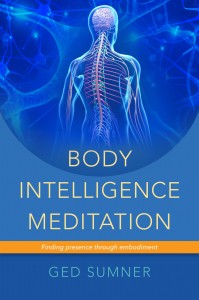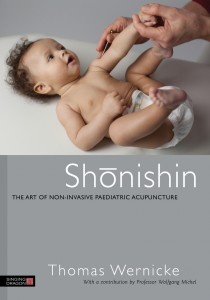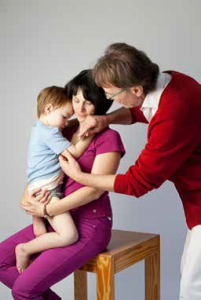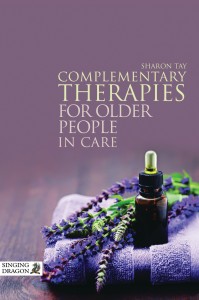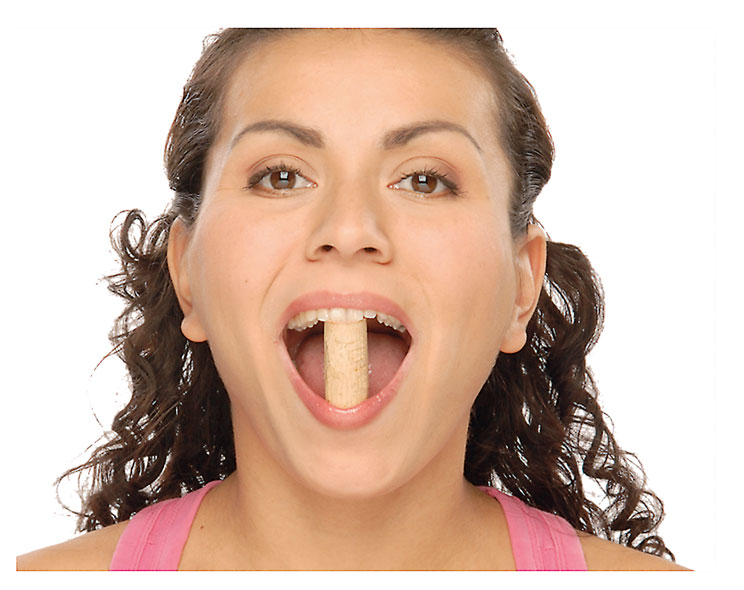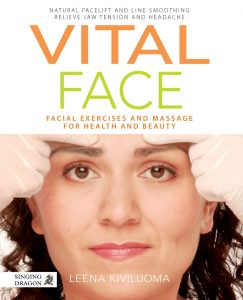 Many years ago when I first met Susan Findlay, owner/director at NLSSM school of massage in London, she told me she would like me to offer a course on knees. I responded that I didn’t feel I did good work with knees, but focused on getting better hips and ankles; then knees seemed to get better on their own. Her response: “If you’re not comfortable with knees, that’s the course you need to teach!” At the time I wasn’t pleased with her response but I’ve come to see the value in it since.
Many years ago when I first met Susan Findlay, owner/director at NLSSM school of massage in London, she told me she would like me to offer a course on knees. I responded that I didn’t feel I did good work with knees, but focused on getting better hips and ankles; then knees seemed to get better on their own. Her response: “If you’re not comfortable with knees, that’s the course you need to teach!” At the time I wasn’t pleased with her response but I’ve come to see the value in it since.
I’ve recently given myself an opportunity to test my theories about bodywork much more strongly than I might have liked. A few days ago I severely injured my right knee… working for several hours on a friend’s cold concrete floor, with lots of kneeling and twisting. After several hours with just the right twist, I heard a loud ‘pop’ and felt that my knee was very unhappy. As far as I could self-diagnose, it seemed I’d either damaged my lateral collateral ligament or torn the lateral aspect of the meniscus. Either way I couldn’t put weight into the knee, couldn’t bend or flex, and couldn’t get comfortable for quite some time.
Anyway, what an amazing opportunity to self-rehabilitate! And I’m pleased to say it’s working: 48 hours after the initial shock, I was back to about 75% function in that knee, and continuing to feel stronger by the hour. I think the ‘formula’ that’s working for me gives us all something to think about. While I can now negotiate lifting myself up a step through that leg and knee, I can’t yet sink through the knee without a great deal of pain, and I don’t see the value of too much pain.
So what’s working? Why am I getting better, without MRI’s and surgery? Can we all get better with a bit of self care? I think we can, but we’ve got to do a bit of work instead of expecting the work to happen to us.
1. I’ve not pushed myself too fast or too far… there’s very little twisting involved, and precious little bending and flexing yet. On day three there’s finally a bit of flexing and extending the foot on a stair step. Only gradually should we trust ourselves to give a bit of flexion while still doing most of the lifting work through your arms, if your toes, knees or hips are complaining. You’ll have a pretty good sense of what’s too much and what’s just right in terms of the paces to put yourself through. The big toe pushups from my book Meet Your Body remain the single most important piece of work I can recommend to rehabilitate one’s entire deep line, but especially the knee.
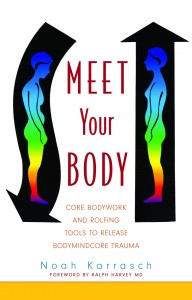
Meet Your Body by Noah Karrasch – featuring the big toe push up and other exercises for releasing trauma in the body
2. I’m always interested in breathing, or at least in staying relaxed while I work to rehabilitate, and I invite you to look at the same. Current Heart Rate Variability studies suggest that a great deal of basic health is predicated on remembering to breathe in and out, regularly, approximately 6 times per minute. This causes a greater HRV which facilitates heart function, strengthens the immune system and reduces inflammation among other wonderful features. When we push too far and too fast, we stop breathing. It’s that simple.
3. I tend to want to look for longer lines of transmission in my body. We’ll rehab ourselves faster if we’re as interested in what’s happening in that big toe on that same side foot, and how it relates to what’s going on in our low back, as we are in what the knee itself has to say. While stretching the big toe hinge by holding onto a table and lifting into the toes, can you also keep your low back back, while stretching your head to the opposite side and looking behind you? Can you see the value of trying to find lines of holding and getting breath through them to help find that most important holding spot and release and resolve it?
4. Finally, I do subscribe to the ‘use it or lose it’ school of thought. I’ve seen too many frozen shoulders or creaky knees where patrons told me that it hurt if they moved, so they’d simply quit moving. Well, how does one expect to get better if one hides from the challenge? While I can understand the thought process, I can’t condone it. We must move through pain and fear to get to the other side! For too many of us too much of what we call debilitating pain is simply fear-based lack of movement into and through a problem spot. Consider that movement can be seen as oiling rusted hinges throughout the body; they won’t start moving freely right away! It will take a bit of time and energy to make them work smoothly again.
And so far, this experience of rehabbing a very scary knee injury is bearing me out on these thoughts. I believe my experience could be duplicated by most of us…those who are serious about getting better, first need to decide to get themselves better. It seems we’ve become a generation of people who expect others to fix us and take responsibility for us. A surgery might be easier, but more likely a 4—6 week recovery from a surgery just isn’t as efficient as a 2—3 week recovery from the work one does for oneself… can more of us begin to think this way? Can we use the simple principle “Use it or lose it” more of the time? Can we decide to first assess what’s going on in our body, second, remember to keep breath flowing through it, third, slowly ask the body to come back to balance, and last, to keep on keeping on without overdoing? Such, I think, defines the ability to heal self.
So, the good news: another learning experience, another healing, another opportunity for me, and possibly you, to practice what I preach. While I wish we didn’t find ourselves in these situations, I truly believe we can still find our way out of them. By slowly returning to a regular climbing of stairs, full range of movement through the knee hinge, and general attentiveness to the way we ask our bodies to work, we can heal. I believe all of us could be inspired to slowly but with purpose, move into and through the pain and fear, and return to function and joy.
Noah Karrasch is a certified Rolfer and licensed massage therapist, and holds a teaching degree from the University of Missouri, Columbia. He teaches core bodywork skills throughout the midwest and also works with the Wren Clinic in East London. Noah has written two books on bodywork: Meet Your Body and Freeing Emotions and Energy Through Myofascial Release.

